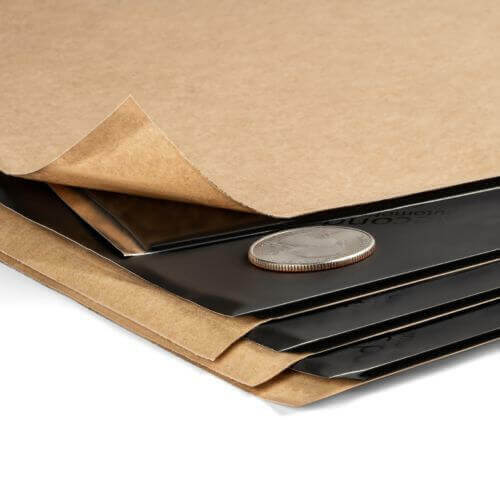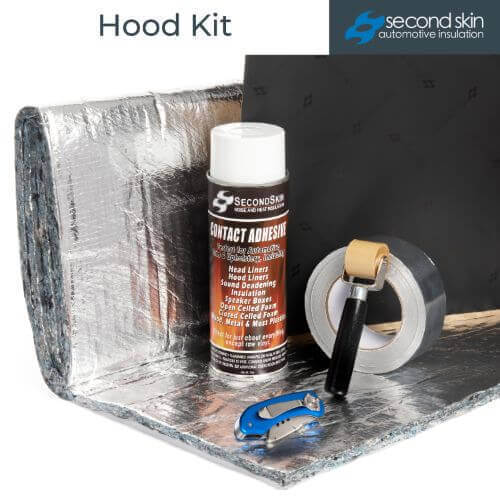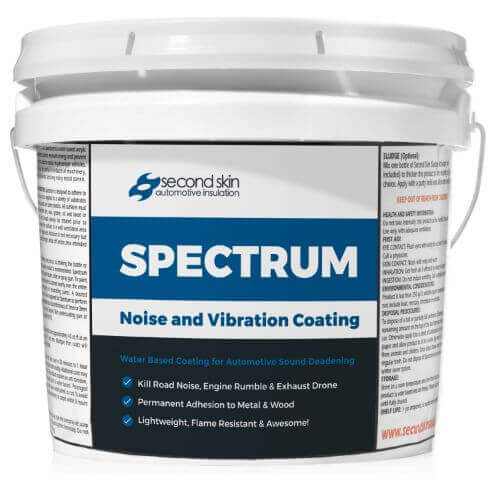Under Hood Insulation, DIY Hood Sound Deadening, Materials Needed
I’m a pretty hands on guy, but when it comes to cars, I must admit that I’m pretty helpless.

I know of lots of guys who can fix minor issues by themselves, and some have turned their garage into a mini workshop.
It could be due to the fact that I’m less demanding when it comes to my vehicle, but one thing is certain: I hate it when it gets noisy.
As my family loves to go on long car rides, it is really important that our car performs smoothly and doesn’t cause too much noise so that our road trips can be pleasant and peaceful.
But what do you know? Recently I realized that my trusty vehicle is becoming louder and louder when I’m at the wheel, so I decided to investigate further.
Turns out it was a faulty hood insulation, which got me working to fix it.
I actually managed to fix a lifter tick before, and now I set my sights on car hood soundproofing.
How did it go? Let’s find out.
I am an Affiliate for Amazon and others, which means I may make a commission if you purchase something through the links here. There is NO extra cost to you at all, and THANK YOU so much for the support. Learn more here.
Contents: Skip to section
Why should anyone soundproof their car hood ?
Do you like to drive while listening to an audiobook or some music?
Do you like to have a chit-chat with your other family or your friends?
Do you want to make sure that your car engine stays cool even when it’s sizzling hot outside?
If you answered yes to any of the above questions, then my friend, you should definitely consider car hood sound dampening.
Don’t fret. It’s not going to cost you a lot if you follow the steps closely.
And what do you get in return?
- Peace while driving.
You will hear only what you chose to. No unnecessary rattling metals or roaring engine in the background. - A thermally stable engine.
Most of the hood insulations nowadays come with thermal insulation properties. That means your engine won’t heat up because of the fierce sun outside. - As a consequence of the above mentioned points, the performance of your audio system and AC will improve too.
- Longer lasting paintwork.
Since most of the vibrations will be absorbed, there will be less friction. Getting protection from heat and friction will consequently save your paint from wearing off. - At last, it can end up saving your life.
In case your engine ever happens to catch fire, the insulation won’t let it spread to other parts. It will give some extra life saving seconds to get off the car.
Isn’t this a reason big enough?
So now that you know why you should insulate it, do you know what an under car hood insulation actually is?
Basically, it is a thick sheath of a material having sound deadening properties, that goes under your car hood.
Some cars already come with it while others don’t. To check, lift your car bonnet and see if there’s any foam kind of material under that.
If not, your car lacks it and you have to do it yourself. Not a very big task though, as most of these are DIY friendly.
Steps on How to soundproof your car hood and reduce engine noise?
1. Remove existing insulation
First check if there’s already any insulation under your hood or not.
If there is, remove it by peeling off.
Use a small flat knife on the corners if it is difficult to do so by hand and avoid damaging the paint.
2. Clean the surface
Clean the hood by wiping it down to make sure the insulation will stick to it properly.
This step is critical and cannot be skipped, as you will only find yourself coming back to fix it again if you didn’t clean it properly the first time.
You can spray denatured alcohol (ethanol) to perform the wipe down
3. Measure the size you need
Measure the hood and mark a boundary of the shape of the hood. You should use the old insulation as a guide if you have one
4. Prepare and cut out the insulation
Now, cut it out carefully using a sharp pair of scissors or knife.
5. Remove and apply the insulation
After the shape is ready, remove the protective layer from it. Make sure you don’t make the adhesive side dirty.
Apply the insulation inside of the hood. Use an application roller to remove all the creases.
6. Tidy and finish up
Check that the insulation mat sticks firmly to the hood and trim off any extra protruding material, if there is any.
You are all set now!
The steps are pretty simple to follow, and this video does a good job of showing you how it is done.
https://www.youtube.com/watch?v=FDapW-2HpaI
Car Hood Soundproofing Materials
Sound deadening mat
These mats provide sound dampening and also thermal insulation.
You can use them to soundproof your car hood or car floor.
The one that I recommend is the Second Skin Damplifier Pro Deadening Mats.
- Very efficective
- Easy to install
- Self adhesive property
- Heavy (more mass means better insulation)
Hood lining insulation kit
This product is specifically designed to quieten up the hood of your car.
The Second Skin Hood Insulation Kit can beat all other hood insulations for sure.
- Provides you superior quality for it’s price.
- Thick and have thermal insulation properties.
- Sticks to the hood tightly.
- Looks attractive when installed properly.
You can also combine the above two for better results. First apply sound deadener and then apply hood insulation.
(Warning : Make sure that you use heat insulating products in this case otherwise the chances of fire can increase!!)
Sound deadening spray
For those who don’t like to use mats, sound deadening spray is the ideal solution.
Use Second Skin Audio Spectrum Liquid and you won’t miss the mats, ever.
It is a Second Skin Audio formulated polymer having viscoelastic and high heat properties.
You can spray or paint it on the desired surface and you are good to go after drying up. It is :
- Waterproof
- Rustproof
- Flame resistant
- Steady even at 400°F
Acoustic windshield
This option is not something you can buy and install on your own, but I added it here so that you can check if you have one, or you can look out for a vehicle with one if you are changing cars.
An acoustic windshield is essentially a windshield that has added layers of sound insulation. While this is not a standard installation in all cars, many manufacturers offer this option.
They can be slightly pricey, but if you are someone who drives your vehicle for a good number of years, this investment will pay itself off.
You can tell if your car has one by checking the corners of the windshield and see if there is either the word Acoustic, “A”, or a ear logo. There are some manufacturers that uses a logo saying SoundScreen.
How much insulation material do you need?
This will depend very much on the size of your hood panel.
For most regular sized vehicles, a 60″ x 60′ will do just fine, but as I mentioned earlier, you should always measure and cut before you do the actual installation.
This will also prevent wastage.
I have heard of people saying that they only insulate the area directly above the engine, but I think the effect is not that great, and since you are already doing the job, why not just cover the entire hood?
Frequently Asked Questions
Do I need sound insulation under my hood?
Sound insulation is for you in case,
- you are facing noise issues in your cabin
- it’s a very warm place that you live in
- you would like to add a safety measure in your car
How do you clean an insulation pad?
First, clean it with a soft brush applying light pressure.
Then, use a vacuum cleaner at low pressure.
At last, clean with a wet cloth and wait for it to dry out completely before using.
What fabric is good for soundproofing?
When it comes to your vehicle, either mass loaded vinyl (MLV) or specialized sound deadening products like the ones above will do best.
The MLV is more flexible in the sense that you can use it for other soundproofing projects around the home too, such as soundproofing your basement apartment, utility closet or and apartment door.
Use one with foam backing if you are using it on floors to make it act as a carpet.
Related: 4 Best Mass Loaded Vinyl: What is best for you?
Does synthetic oil reduce engine noise?
Yes, it does reduce the noise. And more importantly, friction.
Less friction means better engine output. Along with that, it forms a protective layer over all moving parts. So, it does a lot more apart from sound dampening.
Alternatively, you can also go for regular mineral oils if you want to save a few bucks.
How do I reduce road noise in my car?
You will first need to determine where the source of the noise is coming from.
Quite often, the culprit will be the tires.
Find out more about reducing road noise in your car here.
How do I fix lifter tick in my car?
I would recommend these 2 basic methods to try out first:
- Change the engine oil
- Flush the engine
Check out more details in this article about fixing car lifter tick.
In summary
As you shop around for sound deadening mats for your car hood, you might think that the prices are quite high, but I can assure you that it is worth it.
These specialized products have done wonders for my car and I totally dig them.
If you prefer to get someone to fix this for you, bring your car down to your mechanic, or consider using an expert in this field, Second Skin.
They offer a vehicle soundproofing package where they use their premium Damplifier Pro Mats on your car and gives you a complete solution.
Good luck with your car hood soundproofing project!
Other interesting reads:
- Second Skin vs Dynamat: Which is better?
- Soundskins vs Dynamat: Battle of the sound deadeners
- Noico vs Dynamat: The Faceoff
- Make your van soundproofing seem like child’s play! 3 easy methods to choose from
- 6 Best Quiet Coffee Grinders (Updated 2021)
- 5 Best Quiet Drones 2021: Reviews and Guide
- 4 easy steps: How to make a car exhaust quiet temporarily?




